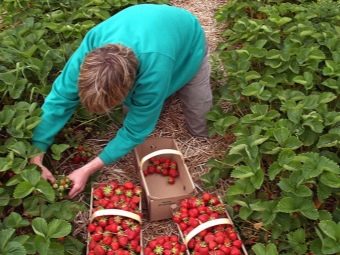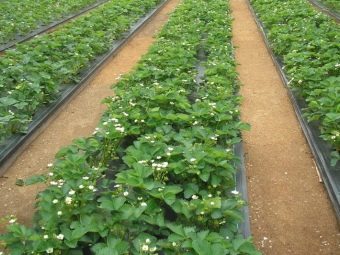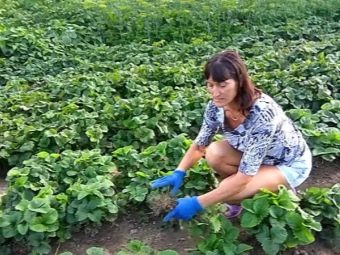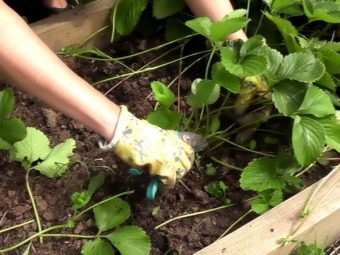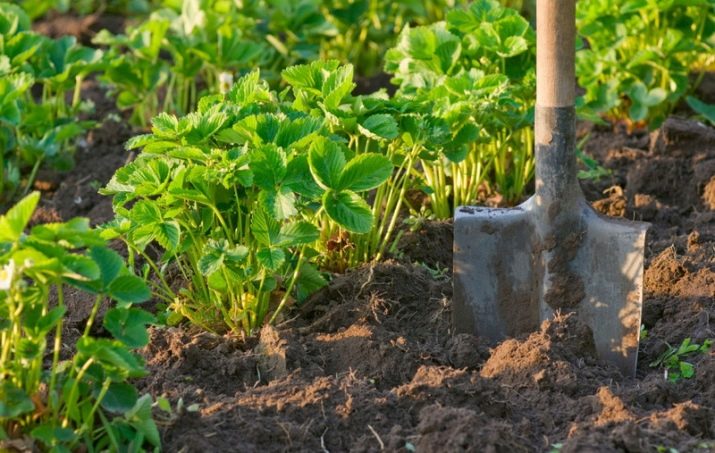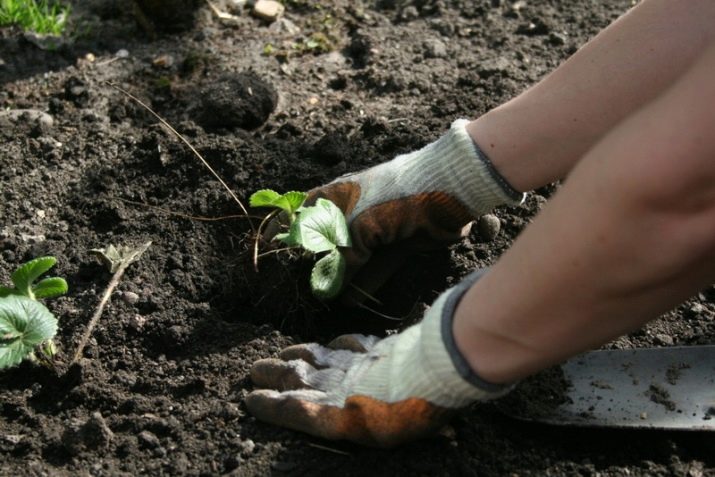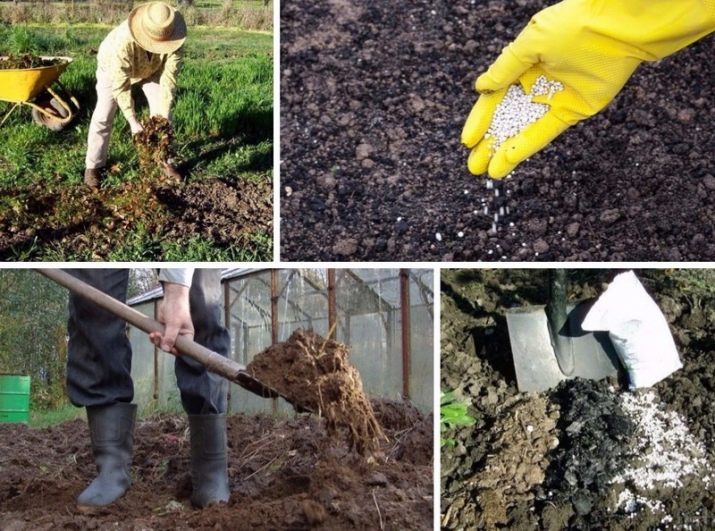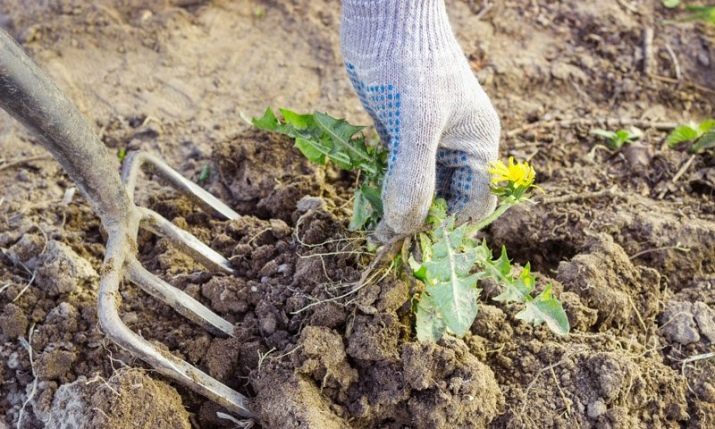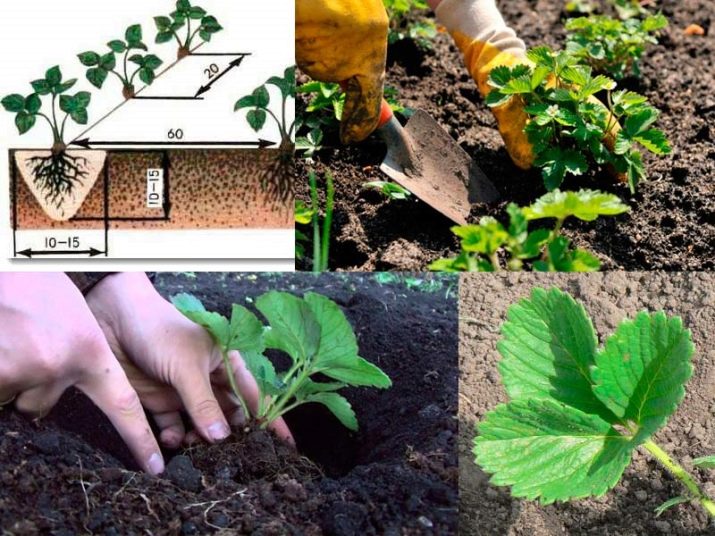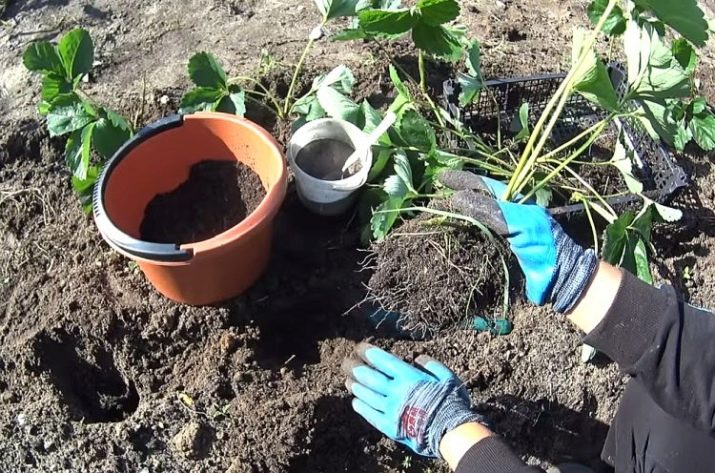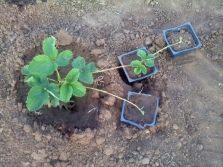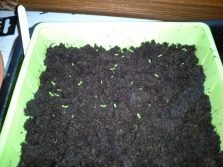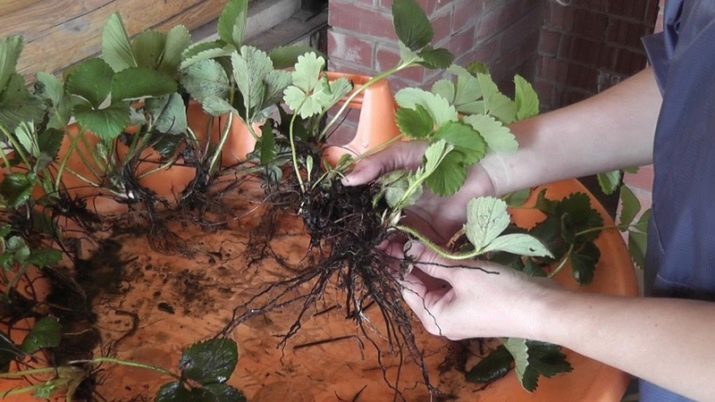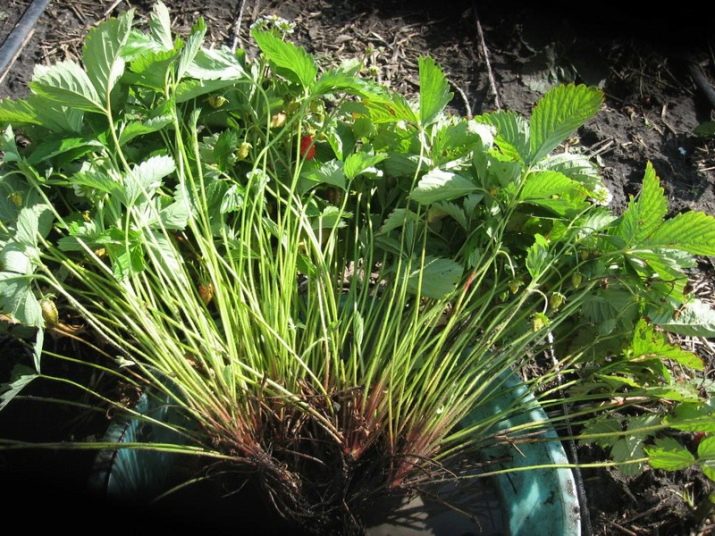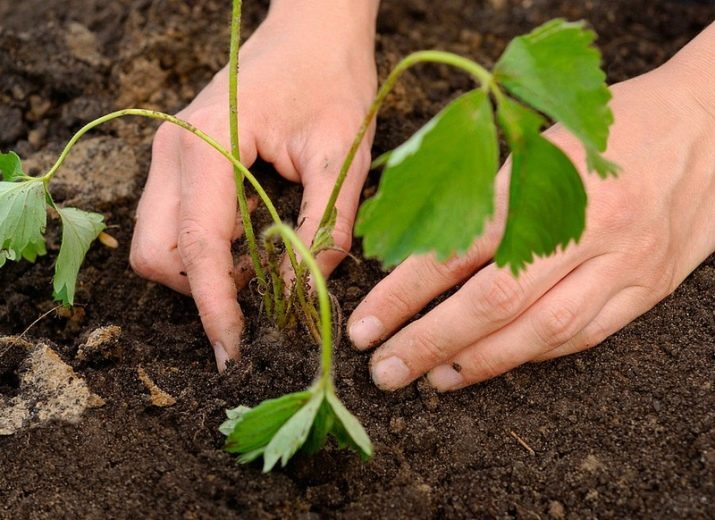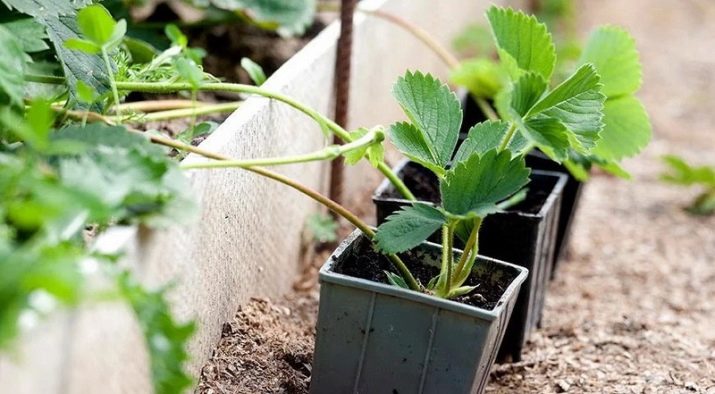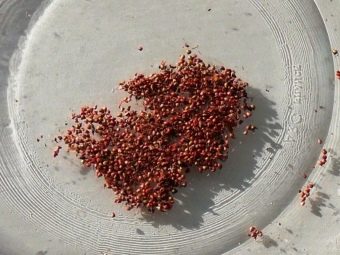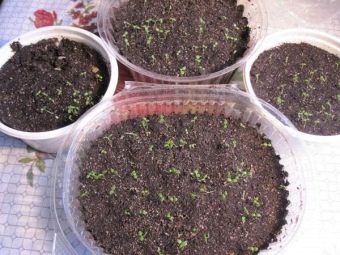How to transplant strawberries in the summer to a new place?
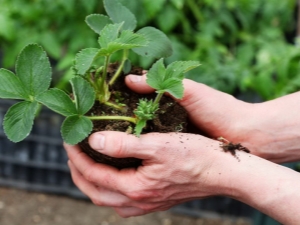
Strawberry is one of the most common garden berries in Russia.It will be difficult to find a vegetable garden where at least one bed of this tasty and fragrant culture did not grow. However, the process of growing it is not so simple. In order for a strawberry to produce a rich and stable crop, it is necessary to monitor and care for it. The basis of strawberry care is the timely transfer to a new place.
The reasons
Timely transplantation is very important when growing any crop. When the plant grows and bears fruit, it spends on nutrients taken from the soil. Over time, the plot of land on which the culture grows is becoming increasingly depleted. Because of this, the plant begins to lack of substances for normal growth. And along with a shortage of substances comes a reduction in yield. In addition, with repeated cultivation of plants in one area increases the risk of their disease.
Strawberries have their own personal reasons for a transplant. One of them is the rapid growth of a strawberry bush. In the process of growth, the bush significantly increases in diameter, which has a very negative effect on the yield of the berry, as it begins to lack nutrition. So, the first year of life a strawberry will have only one horn, and after two or three years already about nine. Sometimes this increase may even be imperceptible, since the underground part of the bush increases mainly. When transplanting, you can divide the strawberry bushes into several parts, thereby returning the original crop to it.
Another reason for transplantation is the formation of an excess of antennae on the bushes. Over time, they become more and more, they grow higher and then dry up or freeze. After that, a lot of strength and energy is spent on their restoration, although such antennae do not bear any benefit and are absolutely not needed by the bush. By transplanting these tendrils, you can replace old plants with new ones that will bear fruit better.
As you can see, without a transplant, a strawberry cannot consistently produce a good harvest. Shrubs are recommended to replant every three years. However, there are various factors that can both shorten this period and increase - this is the type of soil and climate. And because many gardeners choose the term of transplantation, based on signs of soil depletion. To understand that the soil has exhausted its resources, simply look at the plant itself. There are several main signs by which you can find out that strawberries lack nutrients:
- decrease in yield (the number of berries has decreased significantly compared with the first crop after planting);
- reducing the size of the berries;
- the plant begins to look painful (dry and stunted leaves, dry stems and other signs of aging).
The longer the plant remains in the old place, the more pronounced these signs will become. If there is even one of them, the plant should be transplanted. Almost immediately after the transplant, you will notice positive changes. It should be noted that, depending on the reasons for transplantation, there are two types of it: summer and autumn. Summer seating is carried out to rejuvenate the bushes when you plant new antennae or divide a large bush into several smaller ones. Autumn planting is carried out when large bushes are transplanted to a new soil.
Choice of place
Transplanting strawberries, it is extremely important to choose a new place for its growth, because further growth of the bush will depend on it. Attention should be paid to the temperature and lighting of the new place. Strawberries do not like high temperatures; a temperature of twenty degrees is considered optimal for them. At higher temperatures, the bushes can quickly dry out from lack of moisture. Direct sunlight will also be undesirable. It is best to plant strawberries in the shade, for example, near the fence or other bushes larger (but do not plant it too close to them, it may not be enough nutrients).
As for the soil, here the strawberry is very unpretentious and can easily grow on any type of soil. But it feels most comfortable on loose, weakly acidic soil, in advance fertilized with organic matter. By planting strawberries in such a soil, you can count on a very abundant crop. If the soil in your garden does not fit these criteria, you can always correct it yourself by loosening it and artificially reducing acidity, for example, with the help of ash.
Also, an important role in planting strawberries is played by what has grown on this earth before. Strawberries will not grow well after potatoes, tomatoes or cabbage. But the land on which grew greens or beets, on the contrary, prefers. Strawberries grow especially well after various leguminous crops. Before planting a bush to another place, do not forget to make sure that the earth has been thoroughly cleared of roots and various residues of old plants, because in the future they can interfere with its growth.
Soil preparation
The most important strawberry transplant point is the preparation of the place itself. Preparation begins several months before landing. Then it is necessary to dig up the earth and fertilize (to take organic fertilizers better). If you have a medium loamy soil, it is useful to add a peat and ash baking powder to it (a glass of ash on the peat bucket), you can also use sawdust, humus and sod. If you are going to plant seedlings in the summer or autumn, then you should cook the land in the spring. And if you plan to plant strawberries in the spring, then it is better to prepare it in the fall and leave for the winter.
Shortly before planting, the soil is cleared of weeds and various debris. The procedure of degreasing is obligatory, for it use Fitosporin and copper preparations. They will help protect strawberries from pathogens and larvae pests. At the same time fertilizers are applied again. The ideal formula for a plot of ten square meters is processing a kilogram of superphosphate, a pound of nitrogen-containing fertilizers and potash salt and 10 buckets of humus. Before transplanting, you can also loosen the soil. But in any case, do not add ash to it, because it contains a lot of calcium, which will interfere with plant growth.
An important element of transplanting is watering. The earth is moistened the day before transplantation. During transplantation, a hole is dug with water, the plant is placed directly into it. After planting, the plant is re-watered. Do not be afraid that the plant "sink", strawberries love a lot of water. If you transplant bushes in the summer, not only the soil and the bush itself needs to be prepared. Before planting, its roots are placed in a solution of manure, clay and water. Also, for better growth from the bush should remove all the extra loops. And in any case, do not transplant strawberries during flowering, it is better to wait until the bushes otteronosyonut, and then transplant at any convenient time.
Timing
As mentioned earlier, depending on the purpose of the transplant, it can be carried out in summer or autumn. Summer transplanting is especially preferable if you want to plant new bushes from the antennae of old ones, since during this period they will especially need sunlight and heat (but do not forget the shade). They are usually planted in June, so that they have time to grow to a cold pore. It is possible to replant large bushes in the summer, but it is better to do this already in July or in August, after the bushes yield a crop. In no case can not replant flowering strawberry bushes, so you will not only lose the annual crop, but also harm its further growth.
The most favorable time for planting strawberries is autumn. The main reason for this is the frequent rains of this season. At first, transplanted bushes will require abundant watering, which they will ensure and rain, thereby reducing your work to a minimum.The most favorable days for transplantation come in September, however, in warm regions strawberries can be transplanted until mid-October.
Also, strawberries can be transplanted in the spring. The main advantage of such a transplant is the good rooting of the bushes for the winter, but it will require painstaking care, be prepared to spend a lot more strength than on the transplant in summer or autumn. The specific month for spring transplantation cannot be named, since it will depend on climatic conditions. You need to plant bushes when all the snow has already melted, and the plant will wake up from winter. Be careful, because if after a transplant frost strikes again, the bushes may die.
Ways and rules of transplantation
There are three ways to plant strawberry bushes:
- separation of the horns of the bush;
- antennae landing;
- using seeds.
Dividing bush
Each of them has its own advantages and nuances, which we will discuss. Seeding strawberries using division is the most difficult of options, but the fastest. For him, you need to choose an adult bush not younger than three years after fruiting. It is worth noting that the remontant strawberry bears fruit several times a year and needs to be replanted in the autumn after the bush gives the last harvest. Carefully dig a strawberry bush along with the ground, so as not to damage the roots, dig it from all sides. Put it in a wide container.
Carefully dispose of dried leaves and shoots. Still gently release the roots from the ground. Next, lower the bush in a basin filled with water, and wash its roots. Next, let the bush soak, then you can divide it with your hands (those horns that cannot be separated with your hands can be cut off with a knife, but be careful, each of them must have roots and an apical bud). Next, cut off all the old roots, flower stalks and leaves, leaving only the youngest and greenest. All leaves remaining on the stems, cut by half to reduce the evaporation of moisture. For better growth, the roots can be soaked in stimulants or a solution of clay manure and water.
Then dig holes in the garden for the size of the horns and fill them with water (the distance between them should be thirty to thirty-five centimeters). Put the seedlings in the hole and prikopite (it is very important to put the seedling correctly, make sure that its roots stretch evenly and not at an angle, and that its heart is exactly at ground level). Then pour water over again and grumble. That's all, the whole procedure will take you a maximum of a few hours, and as a result you will get mature bushes ready to bear fruit. Do not forget to water them well.
Mustache breeding
Breeding strawberry bushes with a mustache is a fairly simple procedure. Two-year bushes are best for her, as the antennae on such bushes are the strongest. To begin with, if your strawberries are blooming, remove all flower stalks. Choose the most powerful and good mustache, fasten their sockets in the center of the pots with soil, composted or humus. If the mustache continues at the outlet, cut it to give it more power. Now you need to water your pots once or twice a day and wait until the roots grow.
When this happens, separate the new bush from the mother (usually it takes about a month). After this, trim the antennae formed on your bush, and you can plant it on the garden bed. Dig holes to the size of the pots in which the seedlings grew. Fill them with water. Carefully transfer the seedlings from the pots to the holes (watch your heart, it should be at ground level). Dig, pour and grind. Then you just have to watch the bushes and water them in time, then they will surely delight you with a bountiful harvest.
From seed
And in order to grow strawberries from seed, you have to spend a lot of time. First, you have to grow planting material at home in pots for several months.The timing of planting and the necessary care for it will depend on the variety and will be described in detail on the package with seeds. Landing on the bed occurs after the formation of a reliable root system and the formation of leaves, and its procedure is no different from other methods.
Aftercare
Transplanted strawberries have a long period of formation of a reliable root system. To make it faster and easier, you should carefully monitor the culture. There is nothing difficult in this, the main rule is regular and abundant watering. For the first two weeks, strawberries should be watered once a day, and if the weather is dry, then twice. With the same amount of water, do not overdo it, otherwise you just flood your bushes, then they will die. After that, strawberries can be watered as the land dries.
As for feeding, the first year does not need to do anything. If you followed the instructions above and fertilized the land for transplantation in advance, this should be enough for the first time. One year after transplantation, you can feed strawberries with organic fertilizer after it gives the crop. This will help her to winter and give a good harvest next year.
Do not forget about protection from pests. Usually for processing strawberries used "karbofos." They are poured on the soil previously loosened around the bush, and then covered with film for three hours. This procedure will reliably protect your strawberries from pests, but the procedure should be carried out at the end of the season only after the strawberries give the last harvest. You can also use other means, but only organic.
Tips and tricks
Strawberry is a fairly cold-resistant plant, so an adult bush can easily survive the winter without your help. This rule does not apply to young bushes. If you planted strawberries in August or in the fall, then, most likely, your bushes will not have time to get stronger enough for an independent wintering. In this case, you need to take care of them and create a safe shelter for the winter. Strawberries, transplanted in spring or in June, usually have time to fairly securely consolidate in place and get stronger, so you do not need to worry about it in this case.
If you buy ready-made strawberry cones for transplanting, then you should disinfect them before planting. The best way to do this is to put the roots of the plant for fifteen minutes in boiling water, and then let them cool for ten minutes in cold water. This simple method will help kill almost any parasites.
How to transplant strawberries to a new place, see the next video.


